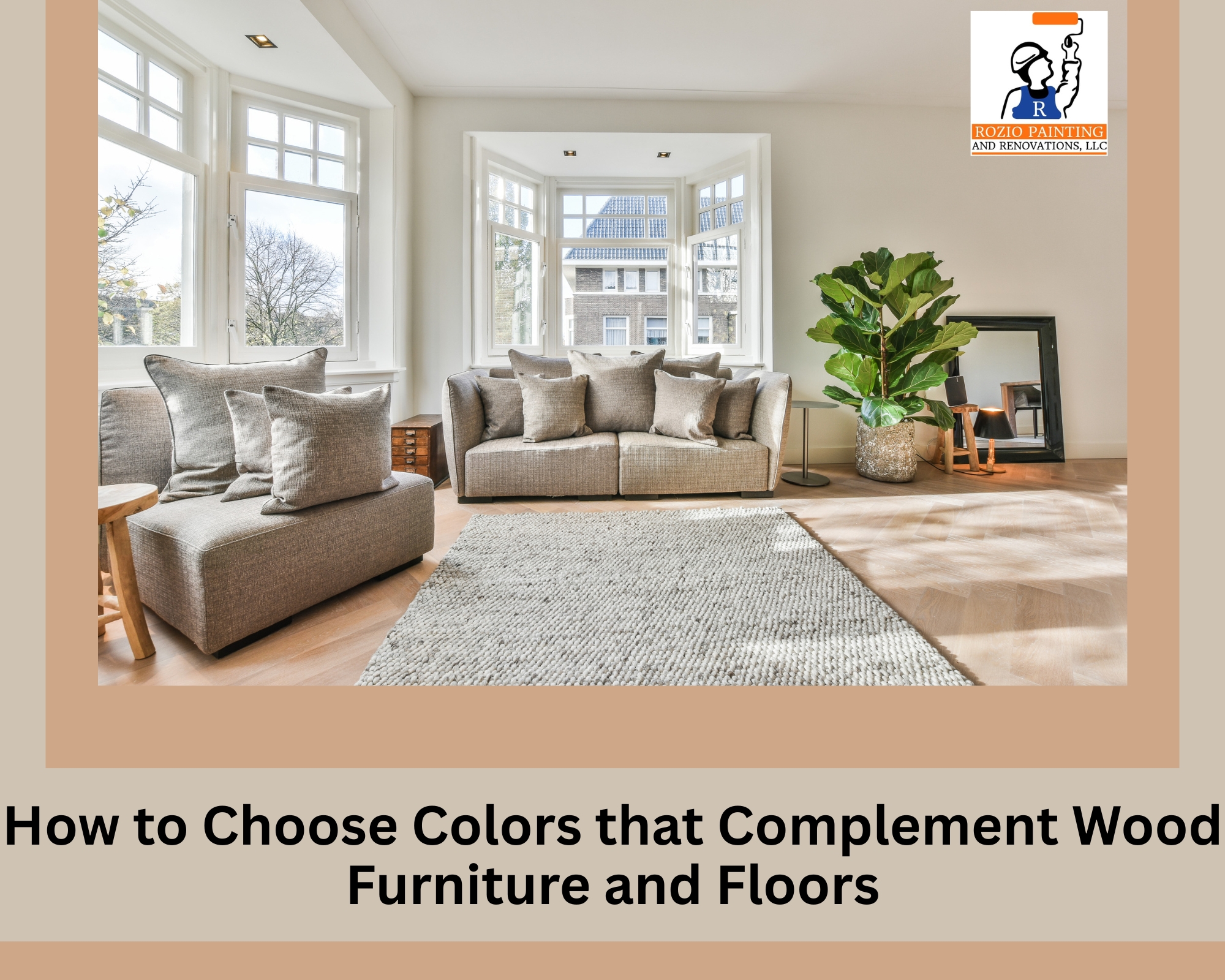
Wood furniture and flooring bring natural warmth, texture, and timeless style to any home. But the beauty of wood can truly shine only when paired with the right colors on your walls, decor, and accessories. Choosing colors that complement wood tones can be overwhelming, especially with the numerous shades of wood available, ranging from light oak to deep mahogany. The good news is that, with a few simple tips, you can create a harmonious and stylish look that makes both your wood elements and your room stand out. At Rozio Painting and Renovations, our local painters in Simsbury, CT, offer expert guidance to help you perfectly coordinate paint colors with every element of your home.
Before choosing a color of paint, define the dominant colors of your furniture and decor. A clear color palette ensures that everything in the room coheres into something beautiful. Select complementary or analogous colors for a balanced and pleasing sense.
Every type of wood has an undertone that influences how it pairs with colors. For example, oak often has golden or yellow undertones, cherry wood leans towards red, and walnut tends to have deeper brown undertones. Identifying these subtle hues helps you choose wall paint and accents that complement instead of clash. Warm woods work well with earthy tones, while cooler-toned woods balance nicely with soft neutrals and blues.
If you’re unsure about bold choices, neutrals are always safe. Shades like beige, cream, ivory, and soft grays allow the natural beauty of wood floors and furniture to shine. Neutrals also create a balanced backdrop that can adapt to any décor style, from rustic to modern. This combination is especially useful in small spaces, as light neutrals can make rooms feel more open and airy.
Feel free to embrace bold choices if you're aiming for a striking impact. Rich greens, deep navy blues, or even charcoal shades can enhance the appearance of light wood furniture. Likewise, vibrant wood hues can mellow the intensity of strong colors, ensuring they don't come across as overpowering. The juxtaposition of dark walls with lighter wood furniture introduces depth and elegance to your living spaces.
Wall colors are just one method to enhance the beauty of wood furniture and flooring. Accessories such as rugs, curtains, cushions, and artwork can introduce either contrast or harmony. For instance, a rug featuring a pattern that incorporates your selected color can unify the entire space. Additionally, metallic elements like gold or brass complement warm woods beautifully, whereas silver or chrome work well with cooler-toned woods.
Lighting plays a major role in how colors look alongside wood. To ensure the right match, test paint samples directly on your walls and check them at different times of the day. This way, you can be confident that the shade complements your furniture and flooring under both natural and artificial light.
Balancing wood undertones with the right colors, whether neutral, bold, warm, or cool, enhances its natural beauty. Paired with the right décor, your space feels stylish and inviting. For the best outcome, follow our painting contractors’ expert advice.